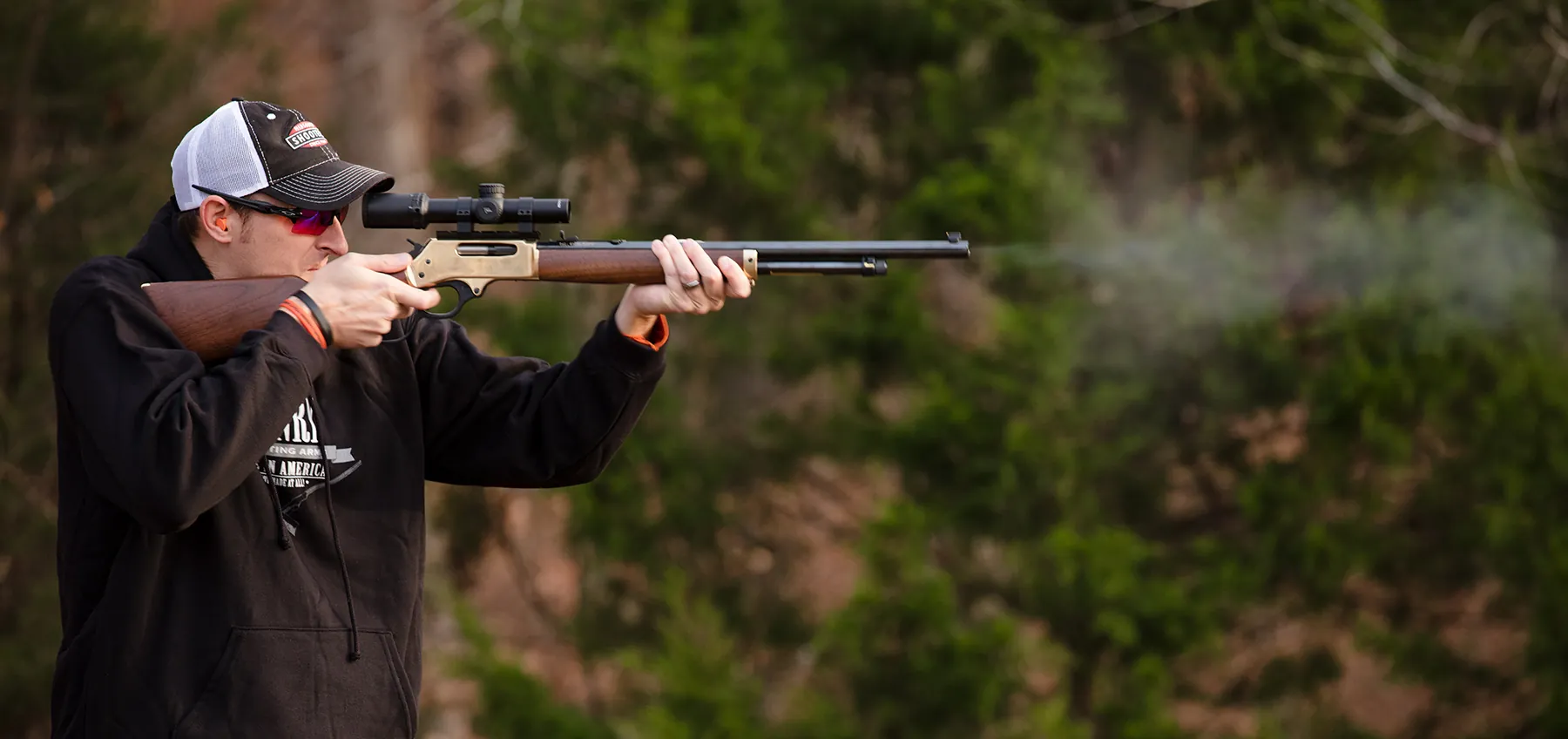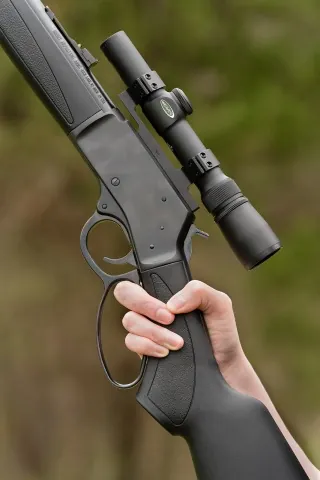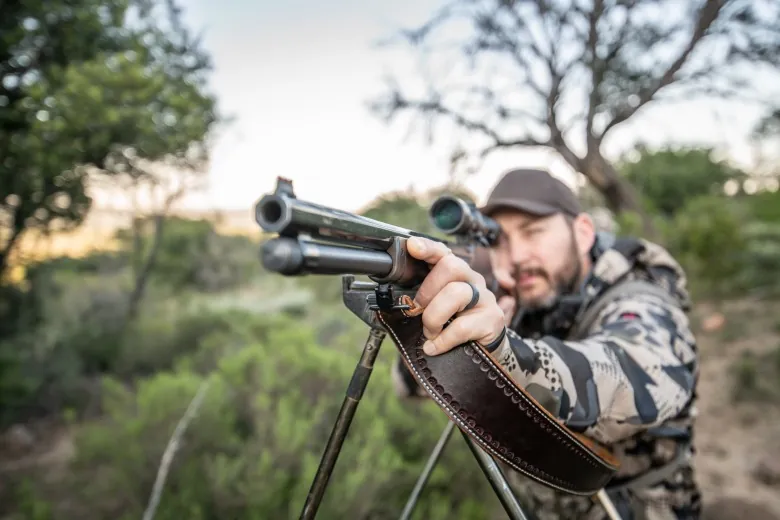How To Choose A Scope
Exploring The Rabbit Hole of Optics Selection

The practical accuracy of a rifle depends on many factors. With Henry guns, the mechanical accuracy of well-made barrels and good triggers already put you a good ways towards hitting your target. You can get even closer to the bullseye with a judicious selection of an optic. Henry rifles are easy to scope: they eject to the side and don’t have bolt handles that could physically interfere with the scope. What you mount depends on the ranges expected and the size of the target. Hunting small game with a .22 LR lever action might require more magnification than going after a hog up close with a .44 Mag.
Depending on the caliber, most Henry rifles achieve between 1MOA and 2MOA with good ammunition. Hypervelocity loads trade off some accuracy for the speed needed for reliable expansion or fragmenting, so let’s assume 2MOA. If the squirrels or rabbits are hunted for meat and headshots are required, that limits the target area to about one inch. The range for shooting squirrels is thus limited to an absolute maximum of 50 yards, and that’s shooting supported, with no wind, and a stationary target. Human eyes can resolve one-inch high-contrast objects at 100 yards, but seeing a gray squirrel clinging to grayish tree bark is very difficult, even at half that distance. Magnification of 8x and higher helps keep the furry target in sight, once it is spotted using binoculars. While quick to point, red dot sights typically don’t magnify the image, and the size of the dot is sometimes big enough to obscure the entire game animal, much less the head. Due to the low contrast of the target and its environment, the illuminated scope reticle is usually a great help, both in separating the reticle details from the background and in sighting with both eyes open.

The Henry Lever Action Magnum Express .22 WMR is ready for optics out of the box with a high-comb Monte Carlo stock.
Almost all Henry rifles are drop stock designs (with the exception of the high-comb stocks found on the Lever Action Magnum Express and the Varmint Express), so the eye is naturally lined up with the iron sights. With no bolt handle to interfere with the optic, the lowest possible rings — usually low for 1-inch scope tubes and medium for 30mm tubes — are preferred. Using Talley integrated base and rings also allows keeping the optic closer to the bore line. Depending on the eye relief, the hammer spur may be very close to the optic tube when de-cocked. In order to operate it, use an offset hammer extension. Going to a scope with a large front objective may require both taller rings and an elevated cheek rest over the comb of the stock. Golden Boy rimfire rifles have a greater stock drop than other models, making them less suitable for optics, though mounting a scope is feasible with a cheek rest added to the comb of the buttstock.
 Fixed magnification optics, usually in the 4x-power range, are inexpensive and offer good light gathering power despite the compact size. For example, a 4×32 scope has a clear aperture around 8mm, plenty to cover even the fully dilated human pupil. A 1-5×24 has a significantly impaired light gathering capacity fully zoomed in. However, zoomed out to 1x with reticle illumination turned on, it can function as an improvised red dot even in very low light. Variable optics do offer greater flexibility: a 2-7x scope can be zoomed out for following a moving critter easily hand-held or zoomed in for a deliberate, well-supported long-range shot. A fixed 4x scope of similar quality will resolve less detail than a 2-7x zoomed all the way to the highest 7x magnification. And the fixed 4x will have less field of view than the variable scope at the widest 2x setting.
Fixed magnification optics, usually in the 4x-power range, are inexpensive and offer good light gathering power despite the compact size. For example, a 4×32 scope has a clear aperture around 8mm, plenty to cover even the fully dilated human pupil. A 1-5×24 has a significantly impaired light gathering capacity fully zoomed in. However, zoomed out to 1x with reticle illumination turned on, it can function as an improvised red dot even in very low light. Variable optics do offer greater flexibility: a 2-7x scope can be zoomed out for following a moving critter easily hand-held or zoomed in for a deliberate, well-supported long-range shot. A fixed 4x scope of similar quality will resolve less detail than a 2-7x zoomed all the way to the highest 7x magnification. And the fixed 4x will have less field of view than the variable scope at the widest 2x setting.
At lower magnifications and medium ranges, a scope prefocused at 50 yards (common for rimfire optics) or 100 yards (common for centerfire) will have enough depth of field to show an adequately sharp image at typical hunting distances. As the magnification rises or distances get very short (for tiny rodents) or very far (for larger and more careful varmints like prairie dogs), so does the need for adjustable focus. Scopes in excess of 10x power should have adjustable parallax, both to keep the target in focus and to reduce the point of aim shift from any decentering of your eye behind the objective lens. Why ever pick a scope without parallax adjustment? It’s simpler, cheaper, and lighter. But let’s look at ground varmint hunting as an example. With accurate 22 WMR ammunition and rifles, targets may be engaged out to 150 yards. At that distance, a 4-16x zoomed to maximum magnification gives an adequate sight picture. Military snipers seldom go beyond 10x power, you say? True, but how large is an enemy soldier compared to a groundhog?
At such high magnification, parallax adjustment helps with both focus and keeping the crosshairs in the same plane as the target. Absent of such precise adjustment, a small movement of the eye from the optical center moves the point of aim considerably. The theoretical downsides to adjustable parallax scopes — increased weight and complexity — are easily solved by buying mid-level or better glass.
Specs like magnification, focusing range, field of view, and weight are easy to check and compare. Resistance to flare and contrast is much harder to learn from the specification list, as is the eyebox — the space behind the objective in which the eye can perceive the sight picture despite not being perfectly centered. A high contrast scope with a generous eyebox will be easier and quicker to use in real life. The best way to verify compatibility with your eyes is actually handling the scope in question. Further, a high-end 1-4x scope may resolve as much or more actual detail as a cheap 1-6x at maximum magnification, and would also suffer less from reflections off the rear objective or from flare due to the sun being near the target. With coyotes more likely to be spotted at dusk, light gathering and contrast can make or break the hunt.

For closer ranges, either for plinking or dangerous game hunting, red dots, holographic sights, and prism scopes offer more rapid sighting than magnified optics. Unmagnified optics are very useful for teaching new shooters. Not only do they simplify aiming for novices already preoccupied with getting the stance and the safety right, but they also solve the problem of cross-eye dominance that’s fairly common in kids. A left-eye dominant right-handed shooter can still shoot from the right shoulder with a red dot. The same isn’t possible with iron sights.
Red dots offer the best battery life, holographic sights are slightly better for undercorrected vision, and 1x prism scopes give the clearest picture but the shortest battery life and require a more consistent eye position. Prism scopes also work without batteries thanks to etched reticles, but at the cost of reduced acquisition speed. When selecting unmagnified sights, makes sure that they are available with low mounts and come in a compact form: an Aimpoint T2 or similar would work well on a Henry rifle, while an Eotech would not. Prism scopes tend to be more recoil-resistant than refractive scopes, but few of them come in low mounts. While even relatively inexpensive red dot optics have improved greatly, be sure to buy quality for use with the hard-kicking dangerous game calibers!






